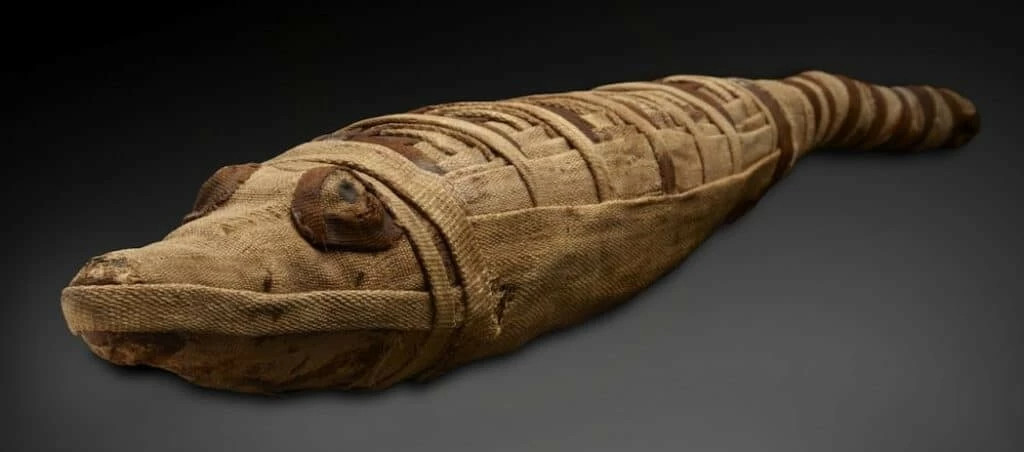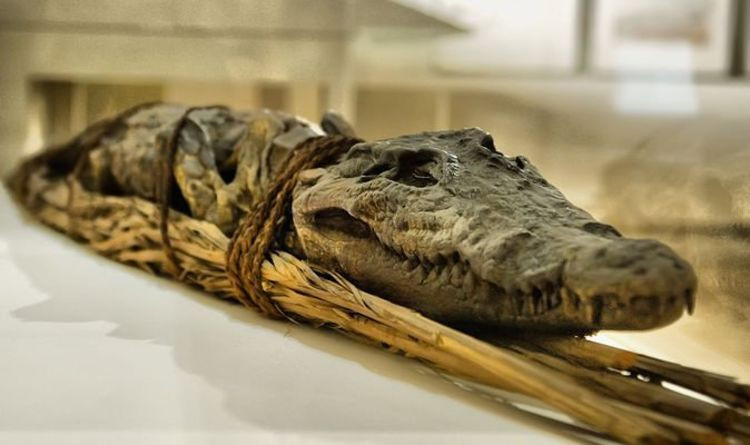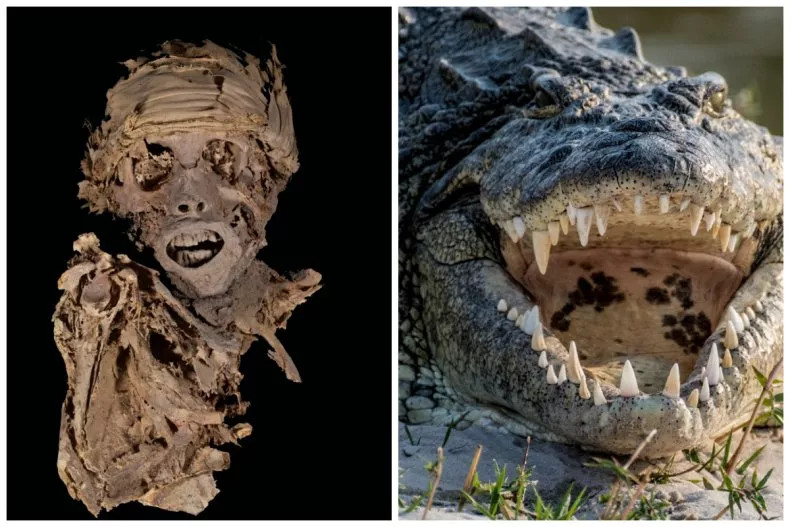Ancient Egyptian Crocodile Mummy Reveals Secrets of its Final Hours
What images come to mind when you think of ancient Egyptian mummies? Perhaps you envision a school trip to a museum, where you encountered a mummified individual within a glass case. Or maybe your mind conjures up Hollywood's depiction of mummies as zombie-like creatures emerging from their sandy tombs, their tattered bandages billowing in the wind.
You might be surprised to learn that the Egyptians also mummified millions of animals.
In a recent study, my colleagues and I uncovered extraordinary details about the final moments in the life of a crocodile mummified by the ancient Egyptian embalmers. Through the use of a CT scanner, we were able to ascertain the animal's cause of death and how its body was treated after death.
The Importance of Animal Mummies in Ancient Egyptian Religion
For the Egyptians, animals held a significant religious function, bridging the earthly and divine realms. Hawks were associated with Horus, the sun god, due to their soaring flight high in the sky, closer to the sun (and therefore, to the god himself). Cats were linked to Bastet, the goddess of protection, a brave and fierce maternal figure.
A Glimpse into the Ancient World
Most animal mummies were created as votive offerings or gifts. Animal mummies offer a snapshot of the natural world, captured between approximately 750BC and AD250. Some of these mummified species are no longer found in Egypt.
For instance, ancient Egyptians would have encountered sacred ibises, long-legged wading birds with curved beaks, along the banks of the Nile daily. These birds were mummified in vast numbers as offerings to Thoth, the god of wisdom and writing. These birds are no longer present in Egypt, as climate change and the effects of desertification have driven them south to Ethiopia.
Another frequently mummified animal was the crocodile. While crocodiles inhabited the Nile during ancient times, the completion of the Aswan Dam in 1970 prevented them from migrating north towards the delta in lower Egypt.
The Crocodile and the God Sobek
Crocodiles were linked to Sobek, Lord of the Nile, the god whose presence marked the annual Nile flood. This flood provided water and nutrient-rich silt for their agricultural lands.
Crocodiles were mummified in large quantities as offerings to Sobek. They served as talismans throughout pharaonic Egypt, warding off evil. This was achieved by wearing crocodile skins as clothing or by hanging a crocodile over the doorways of homes.
The Mummification Process
Most crocodile mummies consist of small animals, suggesting that the Egyptians possessed the means to hatch and raise these young until they were required. Archaeological evidence supports this theory, with the discovery of areas specifically designed for incubating eggs and raising hatchlings. Some were cherished as cult animals and allowed to die naturally.
As crocodiles grew larger, the risk to crocodile keepers increased. This suggests that larger specimens were likely captured in the wild and swiftly dispatched for mummification. Research on the mummified remains of larger animals has revealed evidence of skull trauma inflicted by humans, possibly as an attempt to subdue and kill the animal.
A Fish Hook Found in the Crocodile's Stomach
The crocodile mummy in our study provides evidence that sheds light on how these animals might have been captured. This mummy, housed in the collection of Birmingham Museum and Art Gallery, UK, measures 2.23 meters long. In May 2016, this large crocodile mummy, part of a broader study conducted by a team of researchers I work with at the University of Manchester, was transported to the Royal Manchester Children’s Hospital for a series of radiographic examinations.
Medical Imaging Reveals Secrets
Medical imaging techniques allow researchers to study ancient artifacts without causing damage, unlike traditional methods of studying mummies. X-rays and CT scans revealed that the animal's digestive tract was filled with small stones known as “gastroliths”. Crocodiles often swallow these stones to aid digestion and regulate buoyancy. The presence of gastroliths indicates that the embalmers did not perform evisceration, the process of removing internal organs to delay decomposition.
The Discovery of a Metal Fish Hook
The images also revealed a metal fish hook and a fish among the stones. This study suggests that large, mummified crocodiles were captured in the wild using hooks baited with fish. This finding strengthens the account of Herodotus, the Greek historian who visited Egypt in the 5th century BC. He wrote about pigs being beaten on the riverbanks to attract crocodiles, which were then caught using baited hooks placed in the Nile.
Unraveling the Mysteries of Ancient Egypt
Unlike many aspects of ancient Egyptian life, little information was recorded about animal worship and mummification. Classical writers who journeyed to the country provide some of our most valuable sources of information.
Colleagues from the Birmingham School of Jewellery helped replicate the hook in bronze, the metal most likely used in the ancient original. This replica is on display alongside the crocodile mummy.
Modern technology is constantly expanding our understanding of our ancient past. It's hard to imagine the secrets that technology might unveil in the future.
The Last Meal of a 3,000-Year-Old Crocodile
As we delved deeper into the digital image of the crocodile mummy, a surprising discovery awaited us. Amidst the gastroliths, we stumbled upon a clear indication of the crocodile's last meal – a fish, impaled by a metal hook. This unexpected find provided a tangible link to the ancient Egyptians' methods of capturing crocodiles, confirming the accounts of Herodotus and bringing us closer to understanding their complex relationship with these powerful creatures.
This discovery sparked a deeper investigation, leading us to explore the ancient Egyptian practice of animal mummification, the intricate process of preparing animals for the afterlife, and the religious significance attached to these creatures in their beliefs. Our research reveals a fascinating glimpse into the ancient Egyptians' deep reverence for the natural world and their intricate connections to their environment.
Join the Conversation
Write an article and become a part of a vibrant community of over 187,800 academics and researchers from 5,011 institutions. Register now and contribute to the global dialogue on research and knowledge.



















